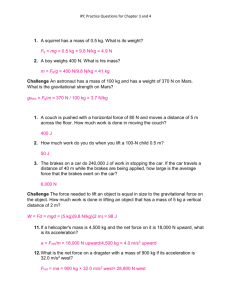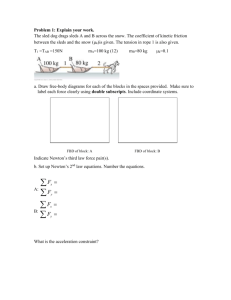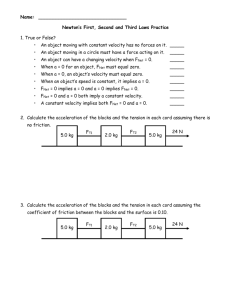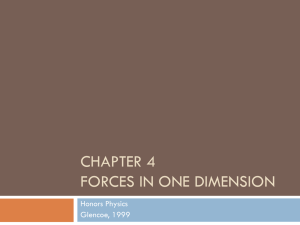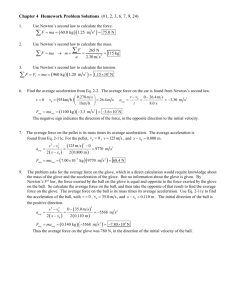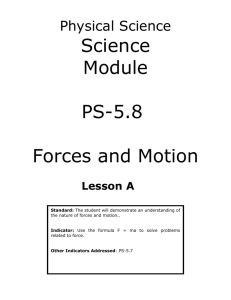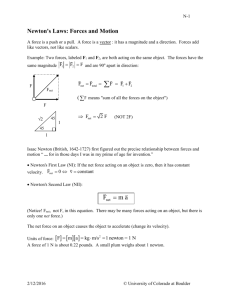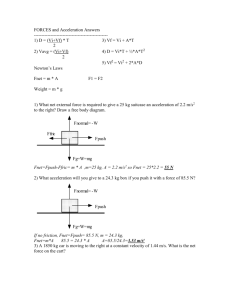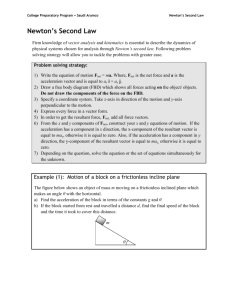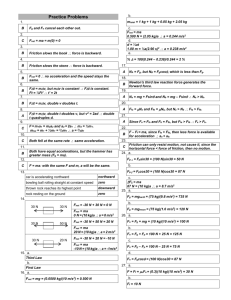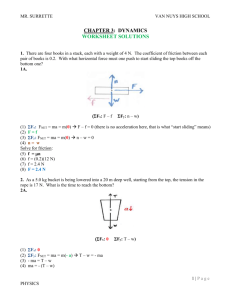Unit2Reviewbyyou1
advertisement
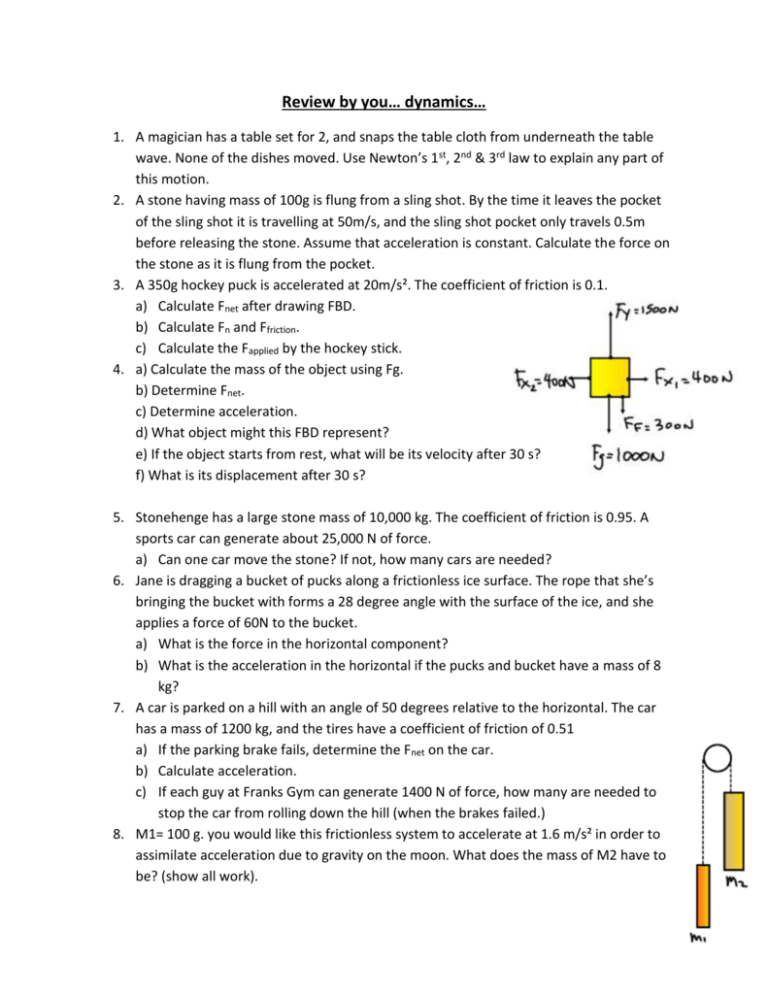
Review by you… dynamics… 1. A magician has a table set for 2, and snaps the table cloth from underneath the table wave. None of the dishes moved. Use Newton’s 1st, 2nd & 3rd law to explain any part of this motion. 2. A stone having mass of 100g is flung from a sling shot. By the time it leaves the pocket of the sling shot it is travelling at 50m/s, and the sling shot pocket only travels 0.5m before releasing the stone. Assume that acceleration is constant. Calculate the force on the stone as it is flung from the pocket. 3. A 350g hockey puck is accelerated at 20m/s². The coefficient of friction is 0.1. a) Calculate Fnet after drawing FBD. b) Calculate Fn and Ffriction. c) Calculate the Fapplied by the hockey stick. 4. a) Calculate the mass of the object using Fg. b) Determine Fnet. c) Determine acceleration. d) What object might this FBD represent? e) If the object starts from rest, what will be its velocity after 30 s? f) What is its displacement after 30 s? 5. Stonehenge has a large stone mass of 10,000 kg. The coefficient of friction is 0.95. A sports car can generate about 25,000 N of force. a) Can one car move the stone? If not, how many cars are needed? 6. Jane is dragging a bucket of pucks along a frictionless ice surface. The rope that she’s bringing the bucket with forms a 28 degree angle with the surface of the ice, and she applies a force of 60N to the bucket. a) What is the force in the horizontal component? b) What is the acceleration in the horizontal if the pucks and bucket have a mass of 8 kg? 7. A car is parked on a hill with an angle of 50 degrees relative to the horizontal. The car has a mass of 1200 kg, and the tires have a coefficient of friction of 0.51 a) If the parking brake fails, determine the Fnet on the car. b) Calculate acceleration. c) If each guy at Franks Gym can generate 1400 N of force, how many are needed to stop the car from rolling down the hill (when the brakes failed.) 8. M1= 100 g. you would like this frictionless system to accelerate at 1.6 m/s² in order to assimilate acceleration due to gravity on the moon. What does the mass of M2 have to be? (show all work). 9. A) Find the force of gravity between the earth and the moon. The mass of the earth is 5.98 x 1024 kg, the moon is 7.4 x 10 22 kg, and the distance between them is 3.84 x 108m. B) What would the mass of the moon have to be (if it was in the same place) so that the upward FG of the moon would equal the downward FG of the earth? What would happen to all objects on the surface of the earth as the moon passed by each night? Answers: 2. 250 N 3a) Fnet=7N b) Fn = 3.43N FF = 0.34 N c) Fapp=7.34N 4a) m = 102 kg b) Fnet = 200N [Y] c) a = 1.96 m/s2 [Y] d) e) 58.8 m/s f) 882 m 5. FF = 93100N 4 cars 6. a) Fx= 53 N b) 6.6 m/s2 7. Fnet=5153N [down incline] b) a = 4.3 m/s2 c) 4 guys 8. 0.139 kg 9. 2 x 1020N 7.1 x 105 m From Book: Pg 153 Self quiz Starting on Pg 154: 1 -18, 30, 31, 41, 42, 43, 52, 55, 58, 61 Pg 197 Self Quiz Starting on page 198: 1-12, 14, 25, 34, 38, 43, 49

